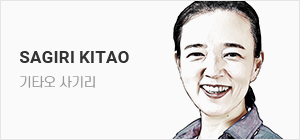

세계 대부분의 나라에서 여아 100명당 출생 남아의 수는 105~107명 정도다. 출생 성비 105~107은 거의 생물학적으로 보편적인 수치로, 여기서 벗어나는 경우는 극히 드물다. 출생아 성별은 무작위적이며, 남아가 태어날 확률은 약 0.513다.
출생 성비가 105~107인 것은 ‘여성의 수명이 남성보다 길다’는 생물학적 보편 명제에 대한 진화적 적응의 결과로 여겨진다. 남성의 ‘연령별 사망률(age-specific death rate)’은 생의 모든 연령에 걸쳐 여성보다 높다. 즉, 남성과 여성이 결혼 연령에 도달했을 때 남성과 여성 수가 거의 같아지려면 해마다 여아 100명당 105~107명 정도의 남아가 태어나야 한다는 것이다.
덧붙여 설명하면 1950년 미국의 출생 성비는 105였으며, 2021년 현재도 105다. 출생 성비 데이터가 수집되기 시작한 이래 미국의 출생 성비는 항상 변함없이 유지됐다. 이렇듯 시간의 경과에도 105~107 정도의 안정적인 출생 성비가 유지되는 현상은 이 생물학적 개념을 방해하는 인간의 개입이 없는 한 거의 어디서나 관찰된다. 〈그래프 참조〉
한국의 출생 성비는 1950년부터 1980년 무렵까지 정상 범주에 속했다. 그러던 것이 1985년에 110, 1990년에는 115로 상승했다. 이후 소폭 하락했다가 1994년에 다시 115로 회귀했다. 다시 말해 1990년 한국에서는 여아 100명당 115명의 남아가 태어났다는 뜻이다.
한국의 출생 성비는 2000년 들어 다시 110으로 떨어졌다가 2010년 무렵에는 생물학적 정상 범주로 돌아왔다. 2021년 한국의 출생 성비는 106으로, 정상 수준에 안착해 있다.
중국, 대만, 인도 등 일부 아시아 국가와 더불어 한국은 1980년대부터 1990년대 초까지 비정상적으로 높은 출생 성비가 보고된 나라다.
이 국가들이 이 같은 출생 성비 불균형을 보인 이유는 크게 네 개의 사건 또는 현상에서 찾을 수 있다. 첫째 20~30년 사이에 출생률이 높은 수준에서 낮은 수준으로 급락했다. 둘째, 남아 선호 사상이 강했다. 셋째, 태아의 성별을 감별할 수 있는 기술을 사용할 수 있었고 그 기술에 대한 접근성이 비교적 높았다. 넷째, 물리적으로 또 규범적으로 낙태가 가능했으며 낙태 시술받기가 비교적 쉬웠다. 이 네 가지는 한국을 비롯한 동아시아 및 남아시아 일부 국가에 여전히 남아 있는 현상·사건이다.
1990년대 초, 115 정도였던 한국의 출생 성비는 평균값임을 꼭 기억하자. 출생 성비는 출생 순서, 거주지가 도시인지 농촌인지, 그리고 지역에 따라 달라진다. 첫째 아이의 경우 출생 성비가 정상에 가깝지만(약 107), 둘째 아이는 이보다 훨씬 높다. 이는 특히 농촌 지역에서 두드러진다. 농촌에서는 둘째 아이의 출생 성비가 145 또는 그 이상인 경우도 발생할 수 있다. 이런 격차는 가족계획 정책의 차등적 적용과 시행 그리고 앞에서 언급한 첫째부터 넷째 문제의 정도 차이를 반영한다.
왜 한국 같은 나라가 생물학적 정상 범주를 벗어나 높게는 115에 이르는 출생 성비를 초래하는 인적 개입을 하겠는가. 그 답은 한국의 극적인 출생률 하락에 있다. 한국의 출생률은 1960년 여성 1명당 출생아 수 6명에 약간 못 미치는 수준에서 1972년에는 4명, 1984년에는 2명, 2017년에는 1명대 초반, 그리고 2022년에는 0.8명 수준으로 내려갔다.
한국의 출생률이 급속도로 추락한 배경에는 수천년간 이어져 온 가부장적 유교 전통의 영향을 받은 문화가 자리 잡고 있다. 이러한 문화에서는 ‘남아 선호’ 현상이 뚜렷하고 확고하다.
1980년대 초까지 수천년간 한국이 그랬던 것처럼 어느 나라의 출생률이 높으면 남아가 태어날 확률도 상당히 높다. 한국 여성이 평균 6명의 자녀를 낳던 시절에는 6명의 자녀 중 남아가 한 명도 없을 확률이 2% 미만이었다. 그에 반해 여성이 자녀를 두 명만 출산할 경우 그중 남아가 없을 가능성은 25% 정도이고, 여성이 한 명의 자녀만 낳을 경우 확률은 50% 남짓으로 내려간다. 요즘 한국의 부모들은 수십년 전에 비해 자녀를 훨씬 적게 낳지만 ‘남아 선호’라는 뿌리 깊은 유교문화는 여전히, 특히 금세기 초까지도 한국에 많은 영향을 미쳤다. 많은 가족이 아들을 적어도 한 명 이상 가지려는 이유다.
따라서 한국 부모들은 아들을 얻기 위한 전략과 개입을 실행했다. 주된 두 가지 방법이 바로 태아의 성별 확인과 낙태였다. 그 결과, 한국에서는 1980년 즈음부터 2010년께까지 여아에 비해 훨씬 많은 수의 남아가 태어났다. 이 과잉 남아들이 결혼 연령이 돼 한국인 신붓감을 찾기 시작하게 되면 대부분은 구혼에 실패할 것이다. 1980년대에 태어난 과잉 남성들이 현재 결혼 연령에 접어들었으며, 결혼 상대자를 찾는 중이다. 그리고 앞으로 20년간 더 많은 수의 과잉 남성들이 결혼 연령에 도달할 것이다.
한국의 출생 성비 불균형이 심각했던 1980년부터 2010년까지 30년간 태어난 과잉 한국인 남아의 수는 대략 얼마나 될까. 추산 결과, 이 30년간 훗날 한국인 여성을 만나 결혼할 수 없는 과잉 남아가 70만~80만명 정도 태어난 것으로 보인다. 이 중 일부는 이미 이르면 2015년에 결혼 연령에 들어섰고, 앞으로 몇 십년간 훨씬 많은 과잉 남성이 결혼 연령에 이를 것이다. 10년 전부터 젊은 한국인 남성과 결혼할 젊은 한국인 여성 수가 부족했다. 이 같은 현상은 앞으로 20년 동안 계속될 것이다. 사실상 모두가 결혼을 할 것으로 예상되는, 결혼이 거의 보편적인 한국 사회에서 발생하는 이런 현상은 특히 어려운 상황이다.
이 같은 부정적 예측을 수정하고 가능한 대안을 제시할 수 있는 상황이 적어도 두 가지 있다. 첫째는, 200만명 이상의 한국계 중국인이 살고 있는 중국 북동부 지역과 그 외 다른 나라에서 한국계 중국인 여성들이 이민 오는 것이다. 그러면 당연히 여성 배우자 풀이 넓어질 것이다. 한국으로 향하는 이 새로운 이민 흐름은 이미 시작됐다. 중국 상하이대학 교수진인 인구통계학자 가이 아벨(Guy Abel)과 허나영(Nayoung Heo)은 2018년 발표한 자신들의 연구에서 ‘한국 정부가 이미 중국 북동부 지역의 한국계 여성이나 베트남, 필리핀 그리고 일부 동유럽 국가 등 소득이 낮은 일부 국가 출신의 외국인 여성들의 한국 이민을 재정적으로 지원하고 있다’고 언급했다.
한편 이 한국인 남성 중 일부가 결국 결혼하지 못하고 자신들만의 삶과 생계를 모색할 수밖에 없게 될 가능성도 있다. 그들은 서울 혹은 성매매업소가 더 많이 퍼져 있는 부산, 대구 등 다른 대도시에서 ‘총각 거주지(bachelor ghetto)’를 형성하고 한데 모여 살게 될 수도 있다.
허나영은 2017년 미국 텍사스 A&M대학에서 쓴 자신의 박사 학위 논문에서 ‘과거 몇 년간 한국에서는 때때로 농촌 노총각들이 한국인 여성 배우자를 찾지 못할 경우 외국 태생 여성과 결혼할 가능성이 컸다’고 언급했다. 이런 일은 아마도 지금도 벌어지고 있을 것이고, 앞으로도 이어질 가능성이 있다.
끝으로 현실성이 극히 떨어지는 해결책을 언급하겠다. 일부에서는 동성애의 증가가 하나의 해결책이 될 것이라고 말한다. 압도적으로 많은 과학적 증거가 동성애의 원인은 생물학적 요인에 있다고 보는 점에서 이것은 현실적인 대안은 아니다. 한국 남성들이 결혼할 여성을 찾지 못하면 장기적인 동성애 관계를 맺을 수도 있다는 생각은 전혀 가능성이 없어 보인다.
1980~2010년 사이 생물학적 정상 범위를 벗어난 출생 성비가 한국 사회에 갖는 함의에 대한 우리의 논의에는 모순적인 면이 있다. 한국은 여성 1명당 출생아 수 6명에 근접하는 출생률 급증 문제를 세계적인 기준으로도 매우 성공적인 출생률 전환을 통해 극복했다. 그러나 바로 그 성공적 전환이 문제가 됐다. 한국은 사회적 규범을 통해 평균 가구당 자녀 수를 인구 대체 수준(replacement level)보다 훨씬 낮은 여성 1명당 출생아 2.1명 아래로 제한했다. 하지만 아들을 갖고 싶은 열망이 만연했던 탓에 1980년부터 2010년까지 30년간 많은 한국인 부부는 아들을 출산하기 위해 각종 개입을 시도했다. 그 결과, 같은 기간 한국의 출생 성비는 비정상적으로 높아졌다. 한국의 출산력 변천(fertility transition)이 너무 빠르게 일어난 나머지, 여아보다 남아를 중시하는 경향이 더 적은, 보다 현대적인 가족 규범이 발달할 시간이 별로 없었던 것이다.
한국에서는 최근 수십년간 이러한 문제들에 대한 인식이 차츰 커졌다. 일례로 1998년 대한가족계획협회(Planned Parenthood Federation of Korea)는 성별 선별을 막기 위한 노력의 일환으로 ‘딸사랑’에 중점을 둔 연중행사를 후원했다. 이 캠페인을 위해 ‘호랑이해’인 1998년이 선택됐는데 그 이유도 바로 호랑이해가 여아를 불운과 연결시키기 때문이었다. 그러나 한국에서 1998년까지 이미 오랜 시간에 걸쳐 발생한 피해는 돌이킬 수 없는 상태였다. 대한가족계획협회가 후원한 행사와 같은 종류의 캠페인들이 그 이후의 출생 성비에는 다소나마 영향을 미쳤을 것이다. 실제로 한국의 출생 성비는 현재 정상 수준으로 회복됐다.
그러나 결혼시장의 불균형을 초래하는 성비 불균형을 소급적으로 조정할 수는 없다. 비록 현재 한국에서는 남아 선호가 완화됐다 할지라도, 특히 결혼시장과 관련된 사회문제들은 여전히 남아 있다. 출생 성비는 이제 정상 수준이지만 1980~2010년 사이에 발생한 출생 성비의 불균형이 초래한 문제들은 한국 사회에서 앞으로도 수십년간 지속될 것이다.
Lots of Bachelors in Korea Can‘t Find and Won’t Be Able to Find Korean Girls to Marry
Dudley L. Poston, Jr.
In most countries of the world, 105 to 107 boys are born every year per 100 girls. A sex ratio at birth (SRB) of 105 to 107 is a near biological universal, with a narrow band of variability. The sex of a child is a random event, with an approximate 0.513 probability of being a boy. An SRB of 105-107 is thought to be an evolutionary adaptation to the biological universal that females live longer than males. At every year of life, males have higher age-specific death rates than females; thus between 105 and 107 males are required to be born each year for every 100 females born each year for there to be roughly equal numbers of males and females when the groups reach marriage ages.
To illustrate (see Figure 1 below), the SRB in the United States in 1950 was 105, and it is still 105 in 2021; it has always been invariant in U.S. for as long as SRB data have been gathered. This stability over time at 105-107 is observed almost everywhere as long as there are no human interventions operating to disturb the biological norm.
In South Korea (hereafter Korea) the SRB was at the normal range from 1950 to around 1980. But it then increased to 110 in 1985 and to 115 in 1990; it went down a little and then back to 115 by the year of 1994. This means that in Korea in 1990, 115 boys were born for every 100 girls. Korea‘s SRB dropped back to 110 by the year 2000, and then back to the biologically normal range by 2010 or so. In 2021 Korea’s SRB is 106, well within the normal level.
South Korea, along with China, Taiwan, India, and several other Asian countries, have been reporting abnormally high SRBs since the 1980s and early 1990s. These unbalanced SRBs occurred in these countries because four events or phenomena have been present: (1) a rapid fertility decline in a 20-30 year period from high to low levels; (2) the presence of a strong preference for sons; (3) the availability and relative ease of access to technologies allowing the determination of the sex of the fetus; and (4) the availability and relative ease of access to abortion, both physically and normatively. These four phenomena/events are all present now in Korea and in several other countries in East Asia and South Asia.
It is important to note that Korea‘s SRB of around 115 in the early 1990s was an average. The SRBs vary by birth order, by urban―rural residence, and by region. The SRB is close to normal (near 107) for first-order births, but much higher for second-order births. This is particularly so in rural areas, where SRBs for second-order births may sometimes reach 145, or higher. This variation reflects the differential application and implementation of family planning policies, as well as variation in issues 1―4 mentioned in the preceding paragraph.
Why would a country such as Korea resort to human interventions that would produce higher than biologically normal SRBs, of as high as 115? The answer lies in Korea‘s dramatic fertility decline. Korea’s fertility rate declined from just under 6 children per woman in 1960, to 4 children in 1972, to 2 children in 1984, to just over 1 child in 2017, to 0.8 children in 2022. Korea‘s extremely rapid fertility decline occurred in a culture that has been influenced by a Confucian patriarchal tradition for thousands of years, where son preference was strong and pervasive.
When the birth rate in a country is high, as it was in Korea for thousands of years up to the early 1980s, the chances that a boy will be born are very good. When Korean women were having six children on average, the probability was less than 2% that none of the six children would be male. By comparison, when women have two children, the probability that neither will be a son is around 25%, and when women have only one child, it is less than 50%. Korean parents are today having far fewer children than they had several decades ago, but the deeply rooted Confucian cultural influences of son preference have still been influential in Korea, especially up through the early years of this new century, making it important for many families to have at least one son. Therefore, Korean parents implemented strategies and interventions to ensure that they would have a son. The two major mechanisms were prenatal sex identification and abortion.
In Korea, therefore, beginning in around 1980 up to around 2010 or so, many more extra boys were born than girls. When these extra boys reach marriage age and start looking for Korean girls to marry, most will be unsuccessful in their courtship pursuit. The extra boys born in the 1980s are now of marriage age and are now looking for girls to marry. And many more of them will be reaching marriage age in the next two decades.
Approximately how many excess Korean boys were produced during the 30-year period of 1980 to 2010 when Korea‘s sex ratio at birth was so out of balance? We have estimated that in those 30 years, there were born in Korea between 700,000 and 800,000 or so extra boys who will not be able to find Korean girls to marry. Some of the extra boys started to reach marriage age as recently as 2015, and there will be lots more extra boys in Korea for another few decades. In Korea starting about 10 years ago and continuing for another two decades or so, there have not been/will not be enough young Korean women for young Korean men to marry. This is a particularly difficult situation because it is happening in a society where virtually everyone is expected to marry, and where marriage is nearly universal.
There are at least two extenuating circumstances that would modify this negative prognosis and provide possible alternatives. One is the immigration to South Korea of Chinese-Korean women from the northeastern part of China, where more than two million Chinese of Korean ancestry reside, as well as from other countries. This would of course enlarge the pool of wives. This new immigration flow to Korea has already begun. Demographers Guy Abel and Nayoung Heo, both on the faculty of Shanghai University, noted in their research published in 2018 that financial assistance from the Korean government is already supporting the immigration to Korea of Korean women from northeastern China, and of foreign women from some less wealthy countries, e.g., Vietnam, the Philippines, and some Eastern European countries.
Another possibility is that some of these Korean bachelors will never marry and will have no other alternative but to develop their own lives and livelihoods. They could well re-settle with one another in “bachelor ghettos” in Seoul and in Korea‘s other big cities such as Busan and Daegu, where commercial sex outlets will be more prevalent.
In Nayoung Heo‘s doctoral dissertation that she wrote at Texas A&M University in 2017, she noted that in past years in Korea, it has sometimes been the situation that when older, rural Korean men were unable to find Korean women to marry, they were likely to marry foreign-born women. This is probably now happening and will likely continue.
We mention finally a solution that is very unlikely. Some have suggested that increases in levels of homosexuality would be a solution. This is not really an alternative since scientific evidence on the origins of homosexuality argues heavily in favor of a biological foundation. It is most unlikely that when Korean males are unable to find females to marry that they will turn to long-term homosexual relationships.
Our discussion of the social implications for Korean society resulting from the higher than biologically normal SRBs that occurred from 1980 to 2010 is ironic. Korea solved its burgeoning ferti lity problem of nearly six children per woman with a fertility transition that is among the most successful experienced globally. However, the very success of the transition has been problematic. Korea has limited via social norms the average number of children per family to well below the replacement level of 2.1 children per woman. However, so pervasive is the desire for sons that during the 30-year period of 1980 to 2010, many Korean couples engaged in interventions to guarantee that sons would be born. This resulted in the abnormally high SRBs that occurred in the country during those years. The speed of South Korea‘s fertility transition gave the country little time to evolve to a more modern familial normative structure that places less of a premium on boys over girls.
There has been a growing awareness of these problems in recent decades in Korea. As an example, in 1998, the Planned Parenthood Federation of Korea (PPFK) sponsored a year-long celebration focusing on “Love of Daughters” as a way of endeavoring to halt sex-selection. In 1998, the “Year of the Tiger,” was selected for this campaign because the Tiger year associates girls with bad luck. But by 1998 in South Korea, the long-term damage was already done. Campaigns such as that sponsored by the PPFK likely had a modest impact on the SRB in the following years. Indeed, Korea‘s SRB is now back at normal levels.
However, the imbalanced sex ratio that will lead to an imbalanced marriage market cannot be retroactively adjusted. Even though today in Korea, the desire for sons has been relaxed, the social issues, especially regarding the marriage market, remain. The SRB is now at normal levels, but the disturbances that resulted from the SRB imbalances from 1980 to 2010 will remain in Korea for another few decades.















